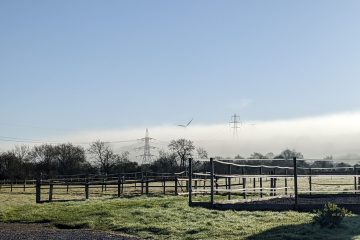
Hunter’s Moon
The Hunter’s Moon is so called because historically it coincided with the time hunters headed out in preparation for the winter ahead, using the light of the moon to spot game.
As the Hunter’s Moon rises it often displays a deep orange hue. This coloration results from the moon’s proximity to the horizon, causing its light to scatter, reflecting through more of Earth’s atmosphere. Consequently, red and orange wavelengths, being longer, pass through the atmosphere, casting an enchanting tint across the moon’s surface.
Lunar Eclipse
The Hunter’s Moon will fade momentarily as it journeys through Earth’s shadow in a partial lunar eclipse. The partial eclipse will begin at 20.35 and end at 21.52 BST. Maximum above Burton at 21:14 BST.
From the UK we’ll only see a small fraction of the full Moon pass into the umbra. At its maximum, which occurs at 21:15, just 12% will be in Earth’s shadow, with 6% in the umbra. Find out more.
Jupiter
Jupiter will appear adjacent to the Hunter’s Moon, and the planet will be exceptionally bright.
At a proximity of 370 million miles, Jupiter will be much closer to Earth than usual this year. Its average distance from Earth is 778 million kilometers. Jupiter will emerge at sunset and recede at sunrise, gracing the night sky throughout.
Jupiter will be at its best visibility on 2 November, when it is positioned directly opposite the Sun, an event known as opposition.
On this day, Earth will align between the Sun and Jupiter, rendering the planet ‘full’, with its entire face illuminated by the sun from our perspective.

2 Comments
Sue Clark · 10/28/2023 at 7:39 am
Very interesting Amanda. Thoroughly enjoyed learning about what a Hunter’s Moon is and why the colour is so spectacular. Will be watching tonight and looking out for Jupiter. Let’s hope the cloud cover is minimal.
Amanda Read · 10/28/2023 at 1:47 pm
Fingers crossed that the cloud clears. As well as Jupiter, which will be up most of the night, you should also be able to see Saturn after sunset and for the early part of the night.